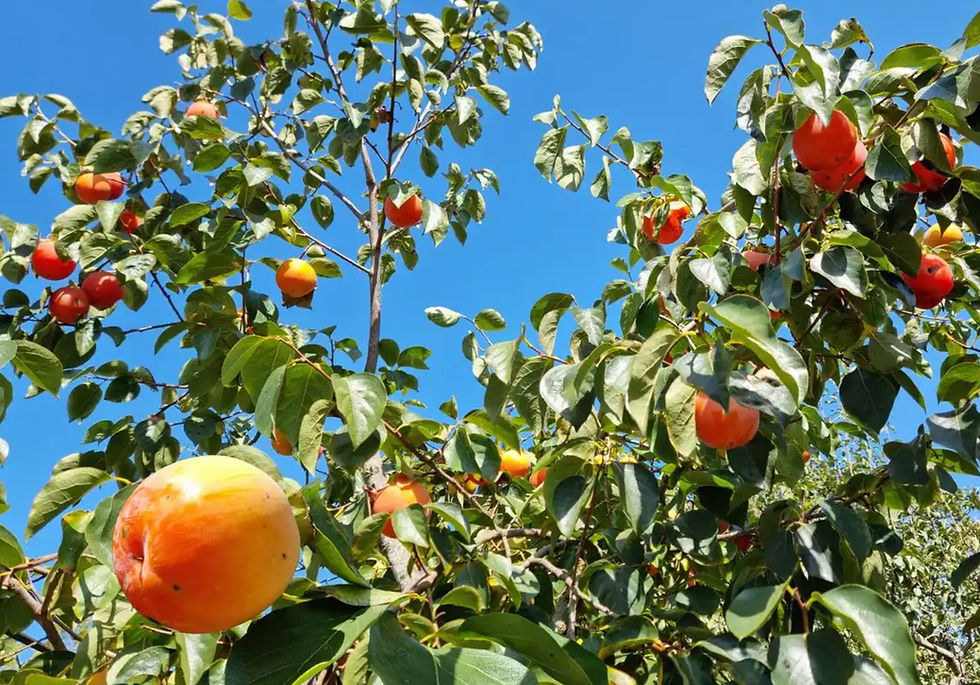When Is the Best Time to Prune Fruit Trees?
- Sun Ning
- Mar 5
- 4 min read
Pruning fruit trees is an important technical measure in orchard management. Reasonable pruning can adjust the growth structure of fruit trees, promote flower bud differentiation, and improve fruit yield and quality. Choosing the appropriate pruning time is crucial for the pruning effect and the growth and development of fruit trees.

In Winter:
Time range: Winter pruning is usually carried out between December and February of the following year, after the fruit trees have fallen leaves and before they sprout in spring.
Advantages: At this time, fruit trees are in a dormant period with relatively weak physiological activities, and pruning has little impact on the tree body. Winter pruning can effectively remove diseased branches, dead branches, crossed branches, and overly dense branches, reduce overwintering sites for pests and diseases, and lower the probability of pest and disease occurrence in the following year. At the same time, winter pruning can adjust the tree crown structure, improve ventilation and light transmission conditions, and lay a good foundation for the growth and fruiting of the following year.
Attention: When pruning in winter, pay attention to the weather conditions and avoid pruning in extremely cold or low temperatures to prevent frostbite of the cut. For some fruit tree varieties with weak cold resistance, such as citrus, pruning in winter should not be too heavy to avoid weakening the tree vigor.
In Spring:
Time range: Spring pruning is usually carried out from the sprouting of fruit trees to before flowering, around March to April.
Advantages: Spring pruning can adjust the quantity and quality of flower buds in a timely manner, ensuring a reasonable load capacity. For fruit trees with excessive flowering, thinning flowers and buds can be used to reduce nutrient consumption and increase fruit setting rate. In addition, spring pruning can promote the growth and development of new shoots, increase the amount of branches and leaves, and provide more space for photosynthesis.
Attention: Spring pruning should be flexibly controlled according to the variety, age, and vigor of the fruit tree to avoid excessive pruning affecting flowering and fruiting. At the same time, it is important to complete pruning before the flower buds sprout to avoid accidentally cutting them.
In Summer:
Time range: Summer pruning is generally carried out from May to August.
Advantages: Summer is a period of vigorous growth for fruit trees, during which pruning can timely control the growth of new shoots and promote flower bud differentiation. By taking measures such as pruning, twisting, and pulling branches, the angle and direction of the branches can be adjusted, the lighting conditions can be improved, and the nutrient supply of the fruit can be increased. Summer pruning can also reduce nutrient competition in fruit trees, promote fruit enlargement and ripening.
Attention: The pruning amount in summer should not be too large to avoid stimulating too many new shoots and affecting fruit growth. At the same time, attention should be paid to the protection of the trimmed wound to prevent infection with bacteria.
In Autumn:
Time range: Pruning in autumn is mostly carried out after fruit harvesting and before leaf shedding, usually from September to November.
Advantages: Autumn pruning can improve the lighting conditions inside the tree crown, promote nutrient reflux, and enhance the tree's cold resistance. For some fruit trees that grow excessively, autumn pruning can control the growth of autumn shoots, promote branch maturity, and improve winter safety.
Attention: Autumn pruning should be moderate, avoiding premature or excessive pruning to avoid affecting the nutrient accumulation of the tree and winter dormancy.
Differences in pruning time for different types of fruit trees:
Stone fruit trees (such as peaches, apricots, plums, etc.): The pruning time for these fruit trees is generally in winter and summer. In winter, the main focus is on shaping and pruning, while in summer, the emphasis is on controlling new shoot growth and promoting flower bud differentiation.
Renguo fruit trees (such as apples, pears, etc.): Winter and spring are the main pruning periods. Adjust the skeleton and thinning the branches in winter, and perform pre flowering pruning and adjust the number of flower buds in spring.
Berry fruit trees (such as grapes, kiwifruit, etc.) need to be pruned in winter, summer, and autumn. In winter, plastic surgery and old branch renewal are mainly carried out. In summer, new shoot management and ear adjustment are carried out. In autumn, nutrient reflux and branch maturity adjustment are carried out.
Taking into account various factors:
Climate conditions: There are significant differences in climate between different regions, and pruning time should be adjusted appropriately according to local climate characteristics. In cold regions, the winter pruning time should be appropriately advanced; In warm regions, it can be postponed appropriately.
Tree age and vigor: Pruning of young trees is mainly focused on shaping, and should be carried out in winter or spring; Pruning fruit trees during the peak fruiting period mainly involves adjusting the ratio of fruiting branches to nutrient branches, which can be carried out throughout the four seasons; Pruning of aging fruit trees is mainly focused on regeneration and rejuvenation, and is often carried out in winter and spring.
Orchard management level: A well managed orchard can be pruned and adjusted at any time according to the growth status of fruit trees; Extensive orchard management should focus on pruning in winter and spring.
In short, the timing of fruit tree pruning needs to consider multiple factors comprehensively and be flexibly controlled. In practical operation, fruit farmers should choose the most suitable pruning time based on the variety, age, vigor, climate conditions, and management level of fruit trees, in order to achieve the best pruning effect and achieve high-quality and high-yield fruit trees.








Comments